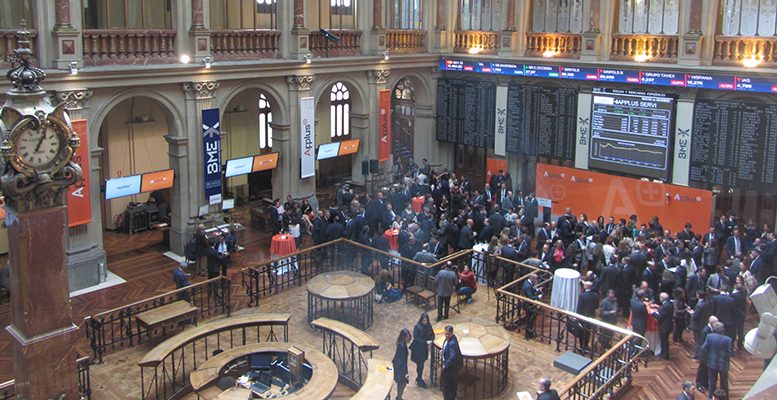Pedro Saá * (Computershare) | It’s still a time for more questions than statements. All this new regulation is “shaking the tree” of the interaction between issuers and investors in Europe, as it gets implemented across all markets with different pace and impact. However, from the obligations for investors to publicly disclose policies to the changes in the exercise of political rights and the new transparency capacities for issuers, one could say that it seems the grounds for a new engagement are under construction.
While the concepts are usually OK-ish (voting policies transparency, alignment with long term strategy, etc) it is usually the practical application what turns those rights and obligations into actual benefits or forbids them.
SRDII, as it is commonly known, means a deep restructuring of the pipes of the communication from issuers to investors and a refurbishment of processes related the execution of shareholders rights and the transmission of holdings information to issuers.
While all the intermediary industry is striving to update their systems and processes to the new -and very detailed- Implementing Regulation (EU) 2018/1212 (and the new standards ISO20022), it can be seen how different has been (and still is) the relevance given to proper communication of the General Meeting, execute voting rights, confirmation of votes and transparency rights amongst members states and also amongst the participants in the issuer/shareholder dynamic. It’s still not the same for an institutional investor to be a shareholder in an Italian company or in a German one or holding shares through a Global Custodian or directly in the local market. But we are getting there…
When we look into the EU we cannot forget that some processes remain very localized, and their nuances create so many differentiations that despite of the standard processes willing to be applied at a cross- border levels, locally it will take some time to perceive the changes.
SRDII and, more precisely, the abrupt implementation without a proper testing phase, is highlighting the real hurdles to achieve the ultimate goals. Several yet unharmonized legislations, shy approach in the SRDII to tackle key concepts such as a common shareholder definition poses a serious threat to a competitive unified capital market across Europe. Businesses that run based on standardization and scale cannot deal smoothly with a jigsaw of rules. Hopefully SRDII is the beginning of the end. Or perhaps a new SRDIII.
A plethora of old and new agents providing new services is arising in Europe, as the new business opportunities are unfolded. Agents are offering new services for intermediaries as they need to comply with the new requirements. And, of course, new services are brought to issuers to benefit from the new transparency rights. However, it is to be seen whether there is enough room for many players doing the same thing. Issuers will face a beauty contest that will likely impact on prices and profitability.
Also, central securities depositories (CSDs), a key infrastructure in the assets eco-system, are playing a part. They have a privileged position as 1st intermediaries. But what is going to be the role of the CSDs? These entities, under pressure to scale in settlement and register volumes, operating in more competitive than ever landscapes, are thrilled to expand their services into areas typically occupied by other agents. In some cases, bringing issuers a competitive offering that can only benefit the market development and achievement of companies’ goals. In a few others, by imposing additional hurdles to processes, claiming technical issues or exaggerated costs assumptions that would end in channelling through them the new flows of information.
Can we look forward?
It’s hard to say -still- how this regulation is going to re-shape the way issuers and investors interact. There are few initiatives in the market aiming to facilitate direct relationship. New technologies, new habits, supported by the adequate regulatory frames, should do it. The COVID crisis (how not?) has allowed to accelerate the trend towards virtual or hybrid meetings -that are here to stay. This context demands investors to directly execute their votes at the AGMs, no matter where they are based. The SRDII sets the frame for exploring new options.
When beneficial ownership visibility is achieved through shareholders disclosure (and we start to see it happening already across Europe), direct communication between issuers and investors will be the natural consequence. However, it’s still to be seen what for, in which cases, to whom, when, etc. There will be some natural self-ruling of all this. Doubtfully investors will be opened to be contacted thousands of times during proxy seasons. But investors may have different approaches as well.
In the next months we will have to learn the tolerance from all sides to make use of the new transparency instruments. How many disclosure requests can be done simultaneously? Or in a period? How much are the issuers willing to spend in this information? Furthermore, the cases of use, as it is not the same a standard annual results road show than being subject of a hostile tender offer.
A better and deeper understanding of the investor community shall be achieved by issuers when they apply to the markets, due to the new transparency. Better and deeper dialogue leading to even further engagement.
It’s a time for issuers, investors, intermediaries and agents to shape the way this interaction is going to happen. And for regulators to further remove the barriers to make it real.
(*) Pedro Saá is Managing Director of Computershare Spain and Portugal, and Responsible for the SRDII implementation within the Computershare Group in Europe. pedro.saa@computershare.com





